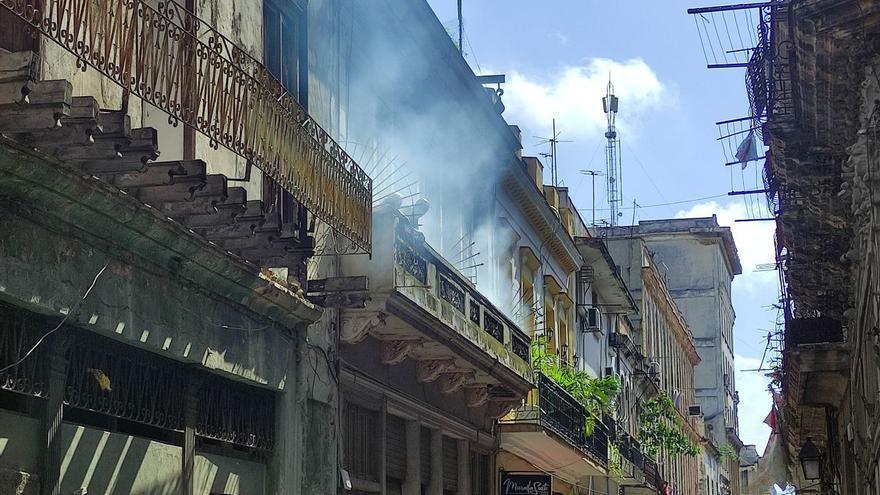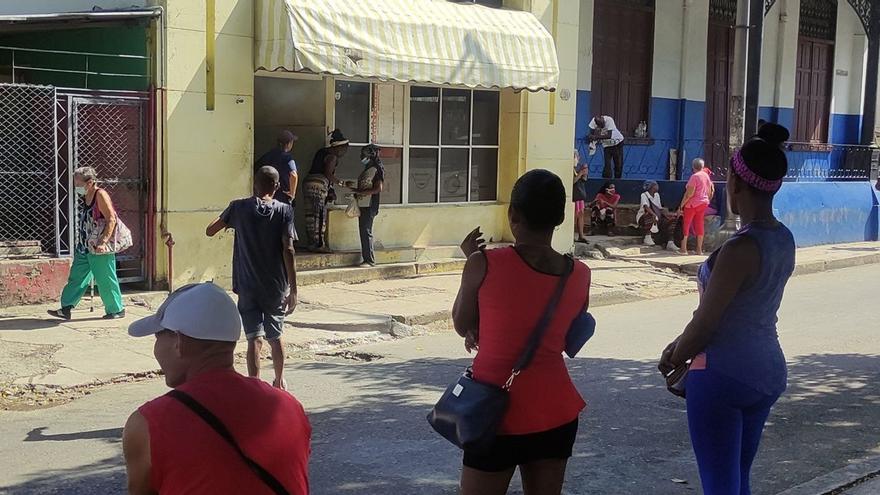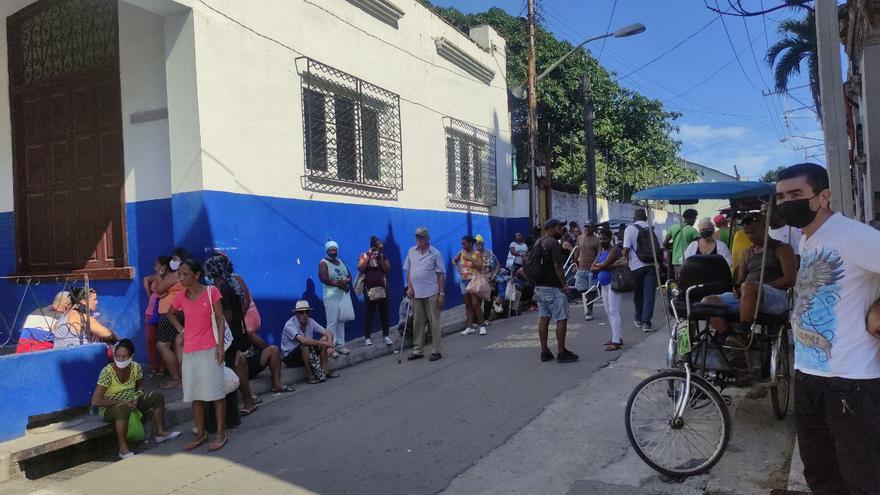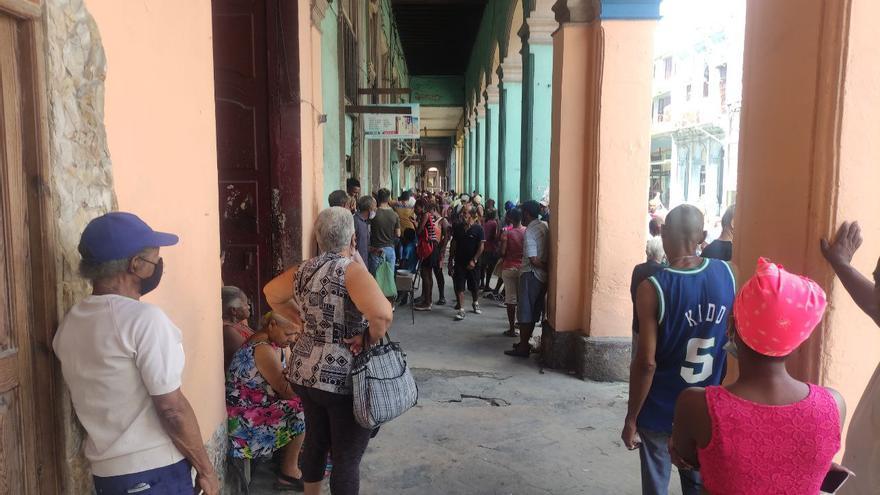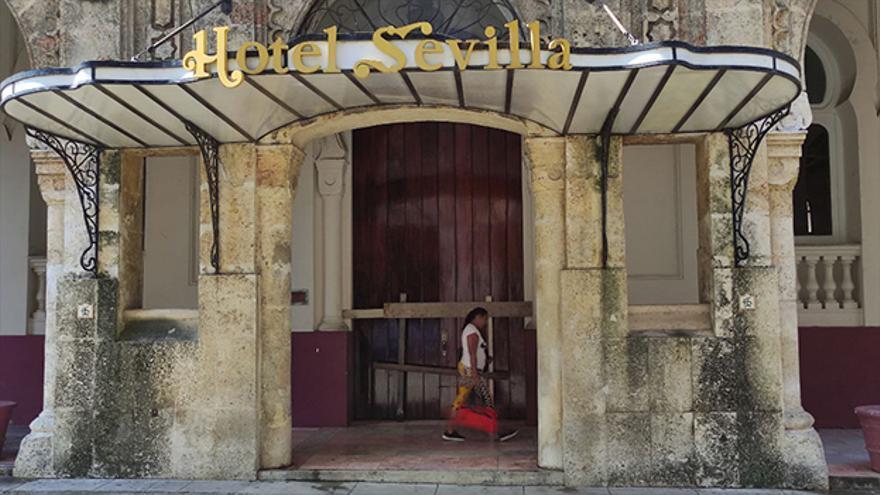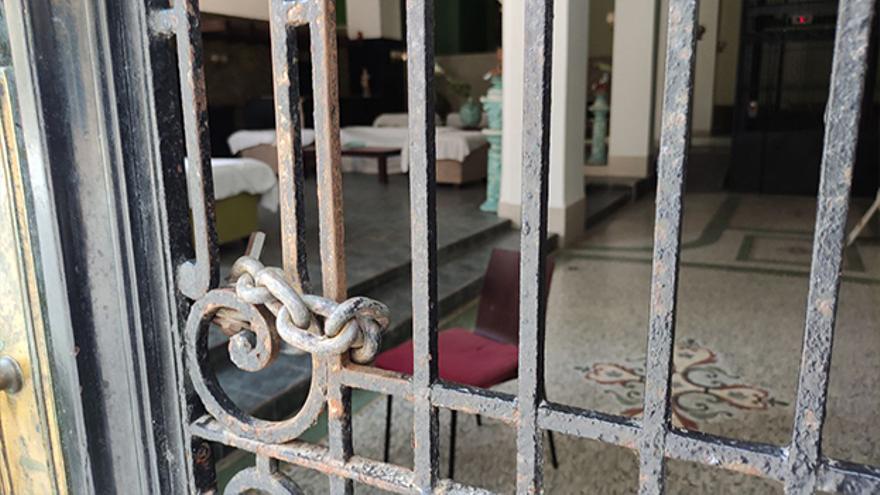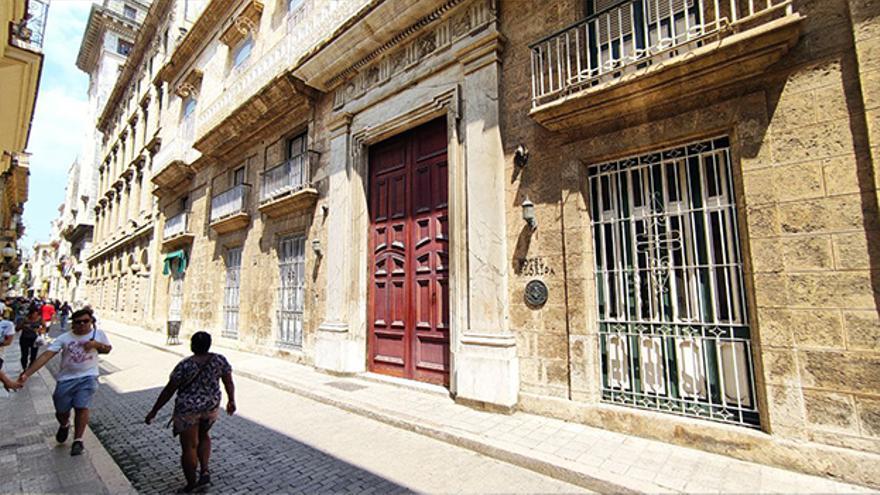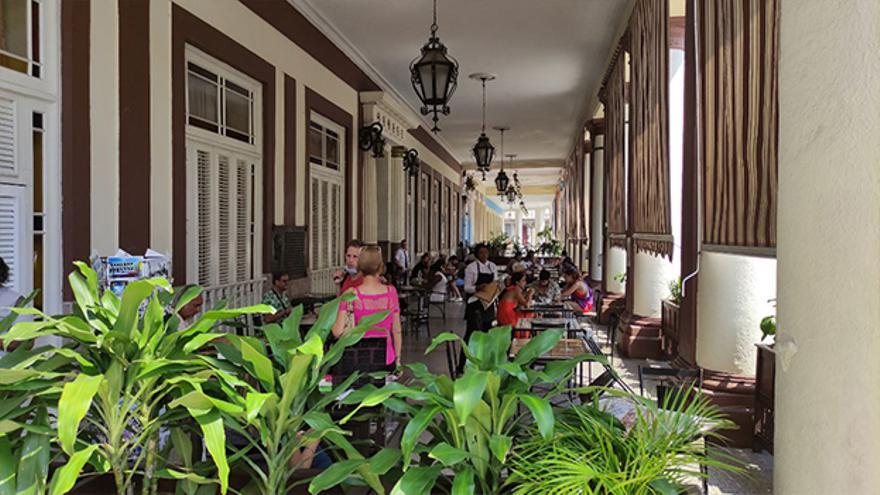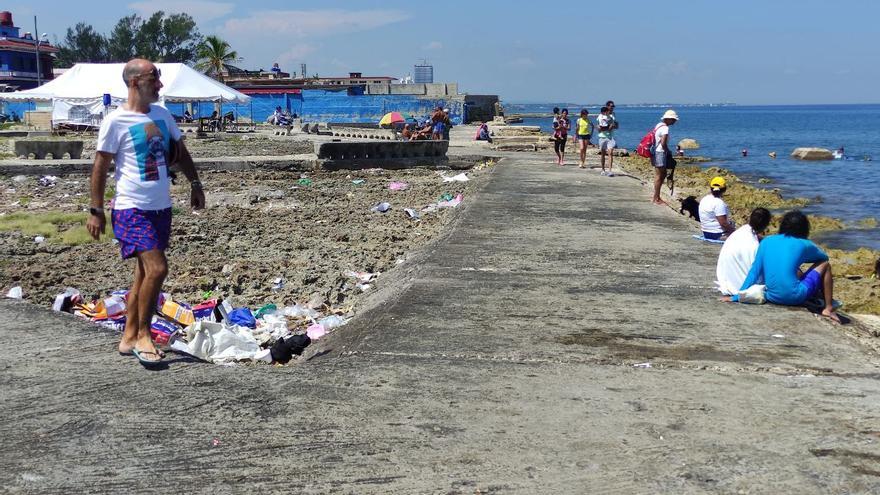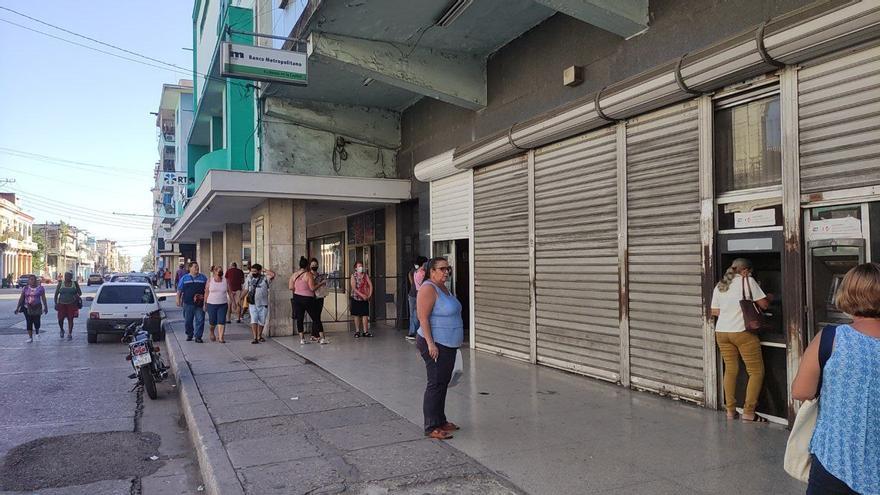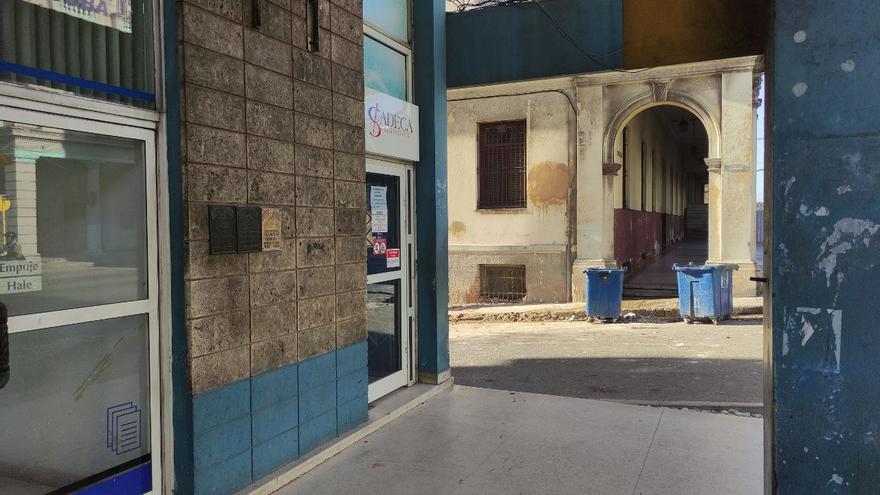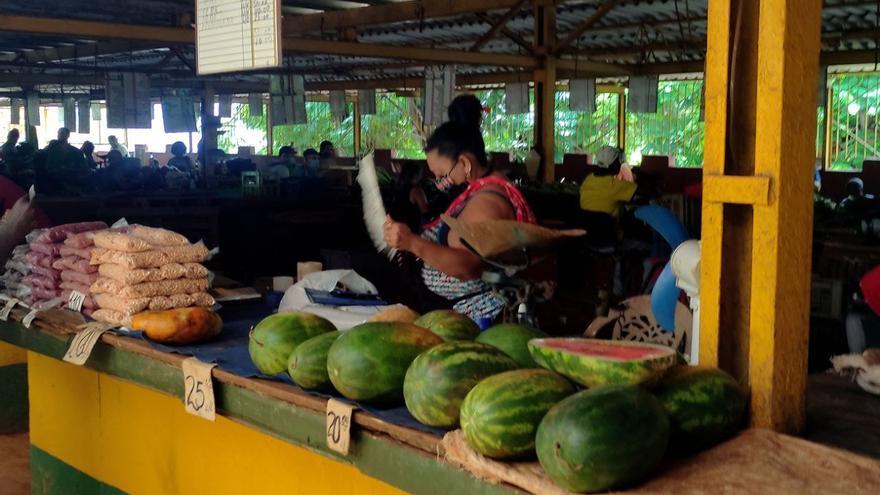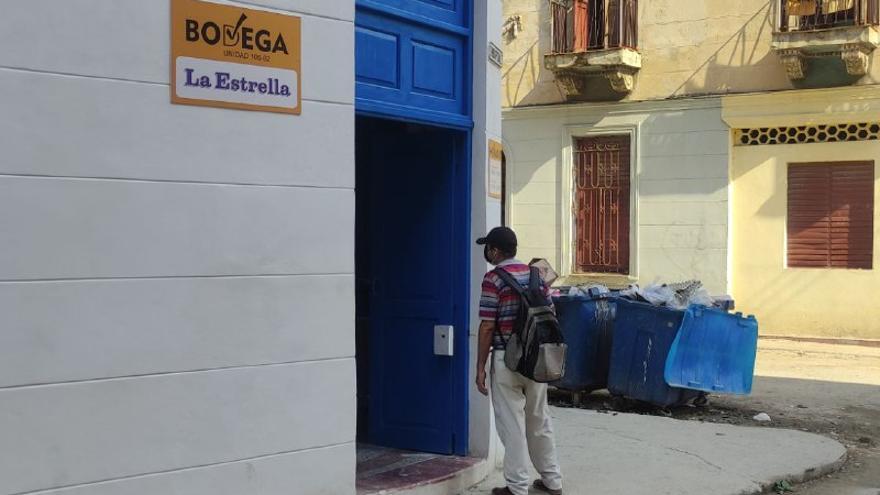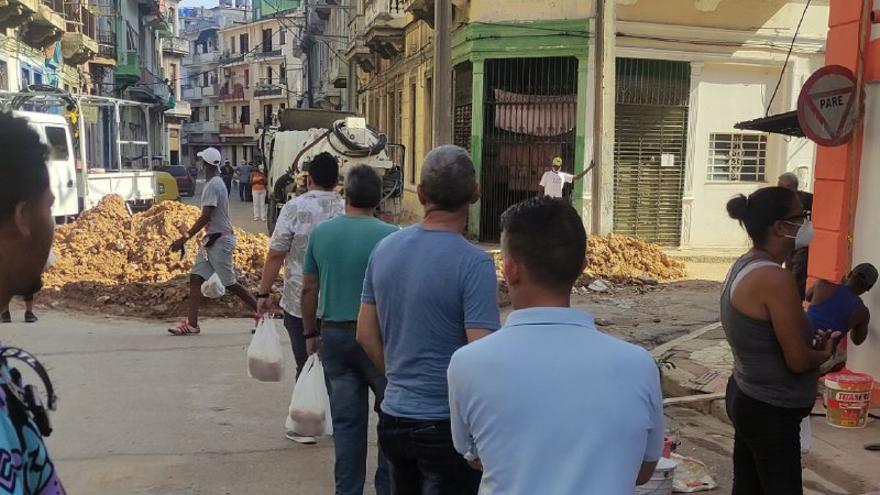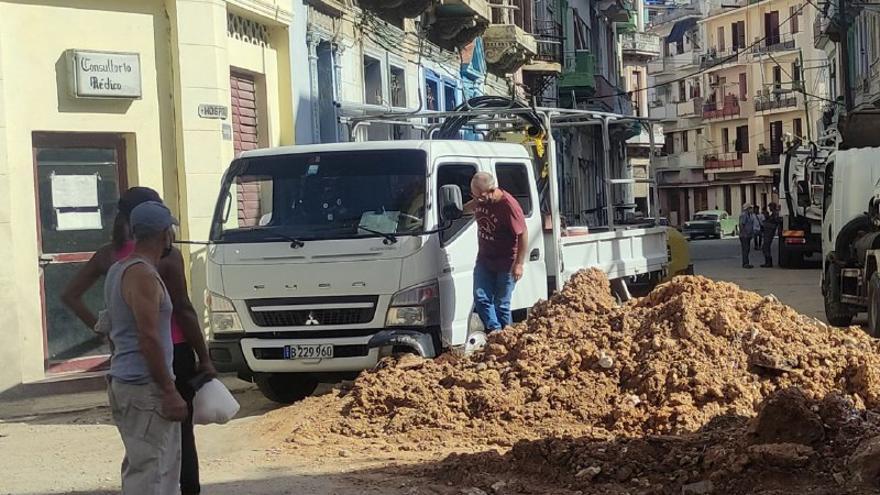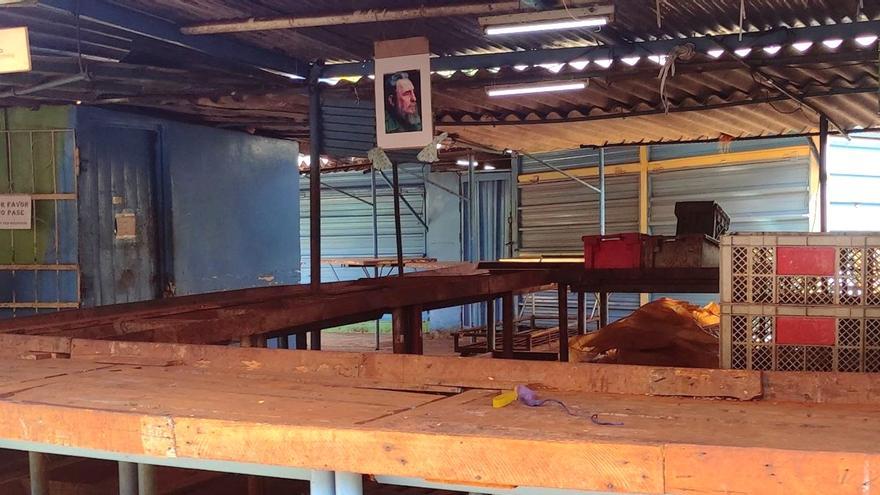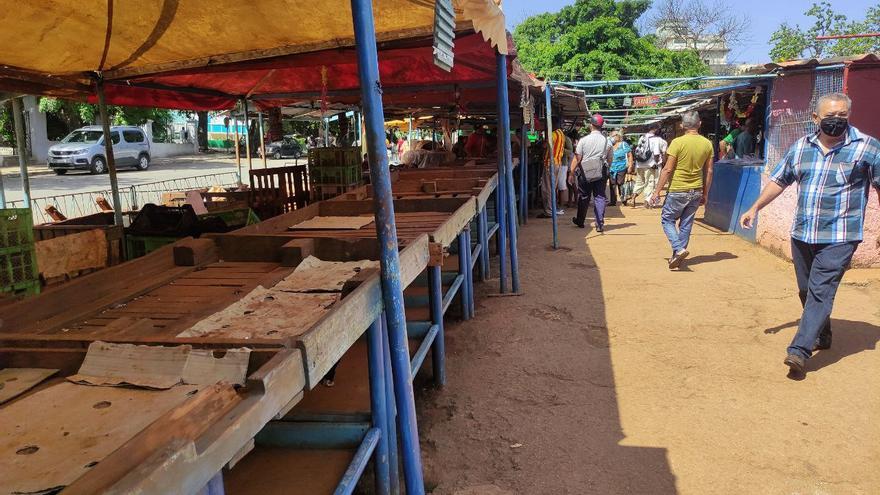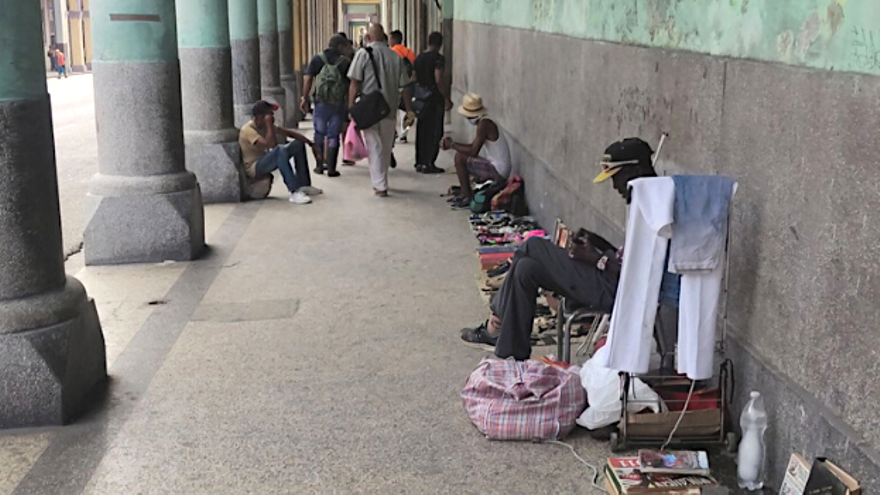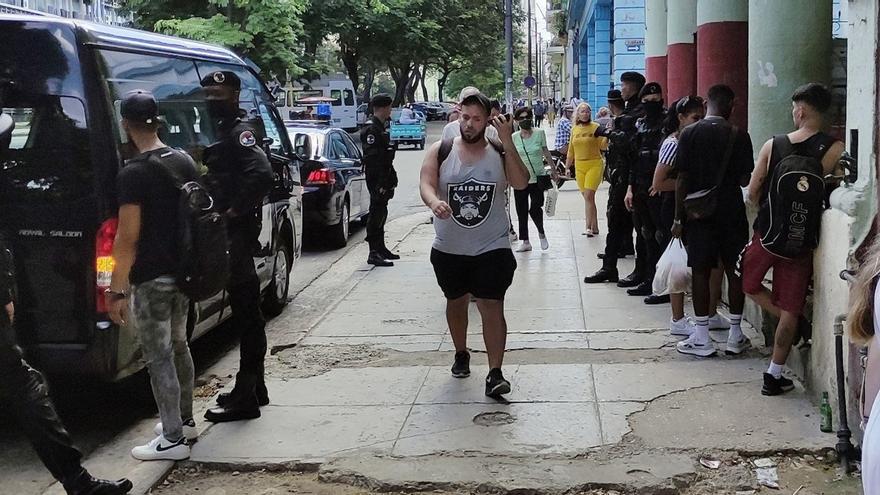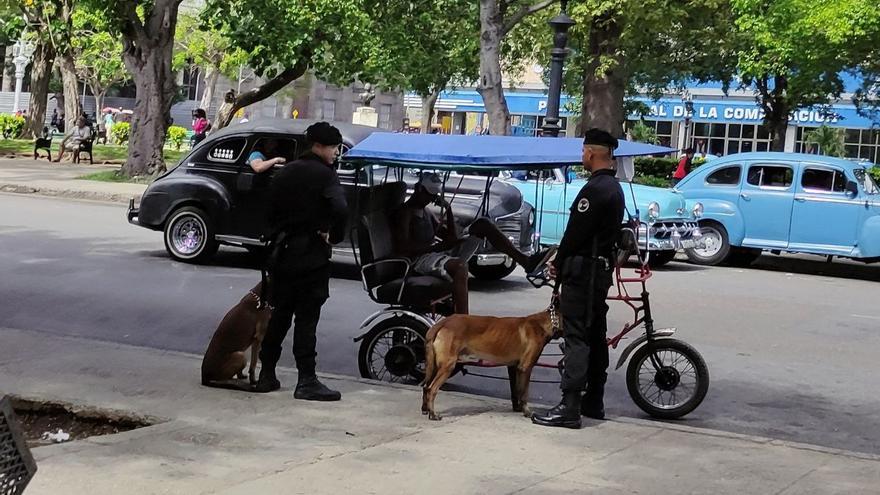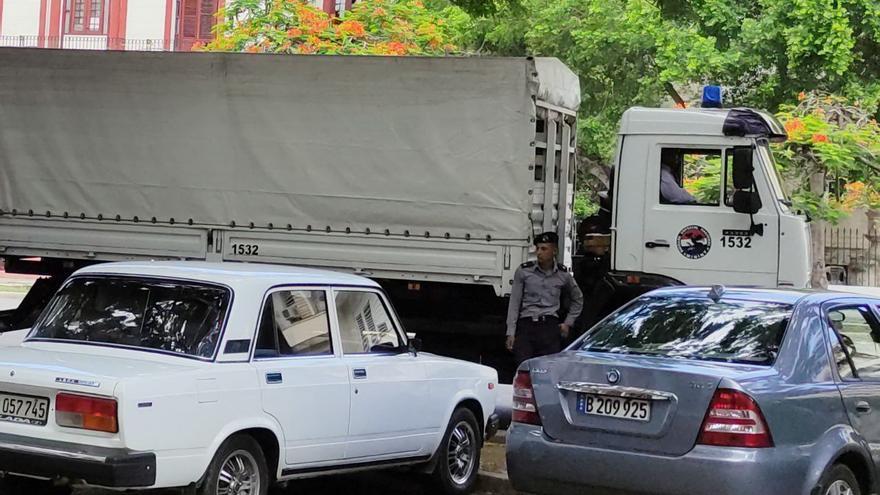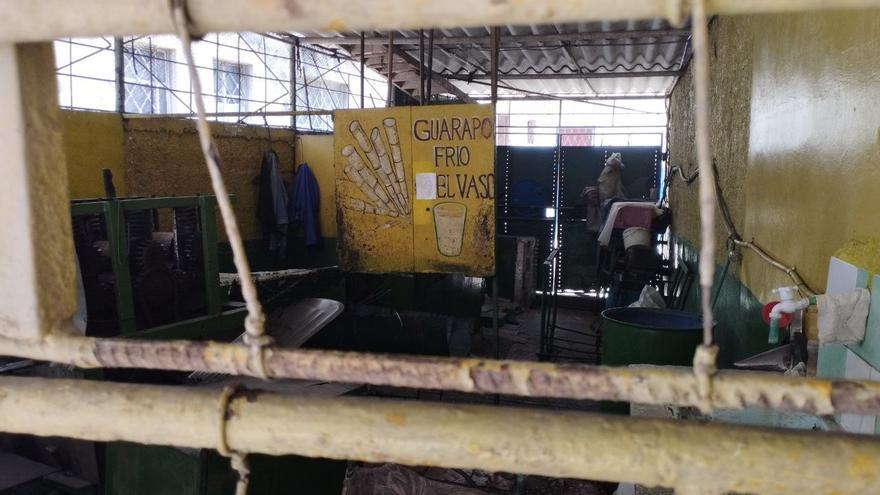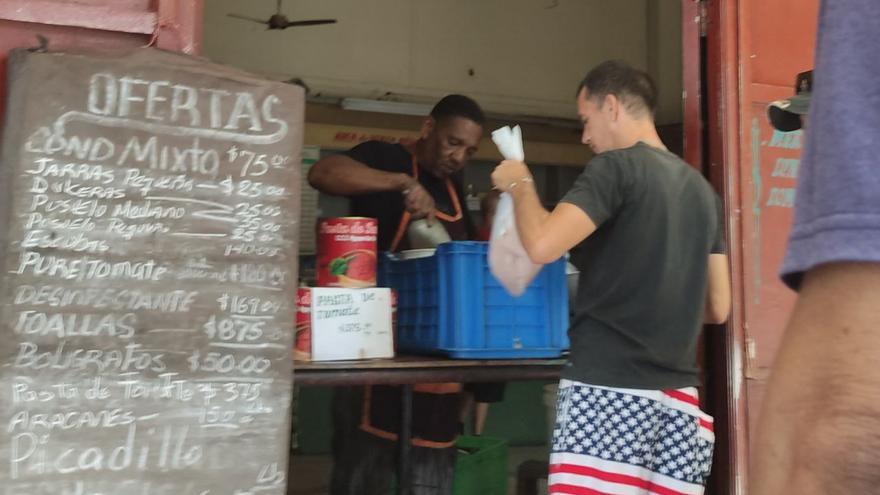
![]() 14ymedio, Juan Diego Rodriguez and Juan Izquierdo, Havana, 2 September 2022 — The street is Carlos III, in Havana. The place: a hovel that is part corner store, part market stall. It could be in any town on the island. A line has formed in front. Havana’s midday sun reverberates through the listless crowd waiting to get in.
14ymedio, Juan Diego Rodriguez and Juan Izquierdo, Havana, 2 September 2022 — The street is Carlos III, in Havana. The place: a hovel that is part corner store, part market stall. It could be in any town on the island. A line has formed in front. Havana’s midday sun reverberates through the listless crowd waiting to get in.
With the thriftiness of someone who has the whole day ahead of him, the vendor puts on an apron and grabs a wooden palette to use as a counter. He is a tall, sweaty man for whom washing his hands before handling the food serves as a pointless formality.
“Let’s go,” he says quietly to the first customer, who opens the mouth of his bag, as wrung out and hungry as he. The store is a hodgepodge, which is to say that its shelves display plastic pots, kitchen utensils that will not last more than a week, thick strainers and dull knives. There are also some canned goods and products sold in bulk, like the one for which people are now waiting in line.
#Video Picadillo de pollo líquido en La Habana, por "solo" 65 pesos👉Un producto nauseabundo estaba a la venta este viernes en una tienda de la calle Carlos III https://t.co/g5TJ1vLnUl pic.twitter.com/2V9tHx0avf
— 14ymedio (@14ymedio) September 2, 2022
Most know what’s to come but no one has a real sense of it until they see it, smell it and feel its texture: some kind of ground meat — what else to call it? — with an almost liquid consistency, a color like vomit and an odor as nauseating as the rest of the street, for 65 pesos a pound. continue reading
One distracted customer makes the mistake of paying for it beforehand. He cannot hide his disgust, which turns his stomach and almost causes him to utter an expletive. “What’s wrong?” asks the vendor as he gently stirs the mixture in the muddy bucket before scooping out a portion of watery ground chicken with his hand.
Nothing,” says the boy as he approaches the makeshift counter in resignation. “Toss it here.”
“They mix it with water to stretch it,” explains an elderly man who is also in line. That’s how they make a little more.” “I remember they sold slop like this during the Special Period,” says another. “And they passed it off as goose paste. The goose is a bird related to the guanajo. Ask your grandparents,” he adds, laughing at his own humor.
Next to the bucket of ground chicken is a can advertised as tomato paste. “No one buys it anymore because people know what goes into it,” says one woman. “Haven’t you seen the online videos? They use guava, banana, some kind of peel, but tomato it’s not.”
After the stench of ground chicken, the air outside has the sweet aroma of syrup and the odor that permeates Cuban soup kitchens. Local residents recognize it as a syrup made in a factory on the same block. It is sold not only at the ground chicken stall but also by a string of elderly people and beggars along Carlos III.
Well-sealed in a backpack, it is now up to Cuban mothers and fathers, armed with their arsenal of tricks, to figure out the most convenient method for cooking it.
Oblivious to all this, however, is the ever-optimistic party newspaper, Granma. As though describing a consumer’s paradise, the Thursday edition allays its readers’ fears. It promises, perhaps in time, “deliveries of rice, beans, sugar, salt and cooking oil” as well as eggs, coffee and a packets of cigarettes of one sort or another.
“Milk is guaranteed” — the paper’s favorite word — “for children, pregnant women and those suffering from chronic childhood diseases, and is encouraged in some areas in liquid form.”
For those who enjoy a nice bath after preparing a banquet from rationed ingredients, a nice “soap made from nuclei, the bimonthly toothpaste and detergent” are promised.
Granma does not ignore, however, peoples’ greatest concern. That is the current shortage of flour, the key ingredient of bread, which they are guaranteed — that word again — as part of a basket of basic foodstuffs. Of course, officials are not responsible for the “changes in hours of operation due to power blackouts or the transport of the raw material.”
The Cuban who arrives home with the “merchandise” dispatched by the tall, sweaty vendor and reads this piece by the official mouthpiece of the Communist Party will, inevitably, have to laugh. If he had known that everything — breakfast, lunch and dinner — was guaranteed, he would not have wasted 65 pesos on the disgusting ground chicken he bought on Carlos III.
____________
COLLABORATE WITH OUR WORK: The 14ymedio team is committed to practicing serious journalism that reflects Cuba’s reality in all its depth. Thank you for joining us on this long journey. We invite you to continue supporting us by becoming a member of 14ymedio now. Together we can continue transforming journalism in Cuba.


